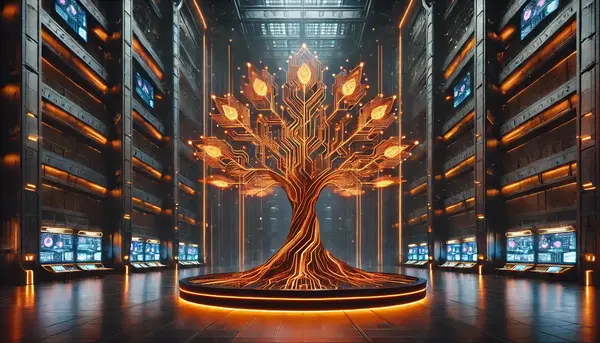

Project Yggdrasil Concluded
 jonas
jonas- HomeLab
- February 9, 2025
The cloud is up and running, everything is wired up, and I’m ready to start building on a solid foundation! With that, Project Yggdrasil officially comes to a close.
This was the first big project for BoniClaud, focusing on setting up the core infrastructure for my home cloud. I wired up the hardware, installed Kubernetes, configured my services… and, of course, over-engineered everything.
The Goals
When I started, I had a few key goals in mind. And I’m happy to say I achieved most of them:
- Storage is running strong. The NAS has been rock-solid, the most stable service in the cluster. With 300GB used on my 1TB SSD, there’s still plenty of room left. I didn’t transfer my full video archive yet (a little hack to save space), but everything else—photos, videos, and service data—is stored securely.
- Computation power is barely holding up. The Raspberry Pi sits at 83-85% CPU load and similar RAM usage. That’s fine for normal operation, but I have to schedule heavier tasks carefully. No parallel processing marathons here!
- Networking is fully set up. Cloudflare securely exposes the blog, my private network is isolated from internet-facing services, and the DNS ad-blocker works… kind of. The improvements are minor, but it’s still a nice touch. Meanwhile, the additional network load from the cluster is barely noticeable.
- Zero-Ops is a dream… sort of. No system just magically maintains itself, but ArgoCD’s self-healing and Kubernetes’ redundancy make things surprisingly resilient. Sometimes, service recovery takes up to an hour, but in the end, it fixes itself.
So, the core goals are met. There’s room for improvement, especially in hardware resources, but maybe there’s already a new project in the works to address that…
Expectations vs. Reality
I didn’t start with a rigid plan—I just had an idea of what I wanted. But I definitely had some unrealistic expectations of how well the system would perform.
Uptime Dreams vs. Reality
I originally thought I could achieve “four nines” (99.99%) uptime, meaning less than four minutes of downtime per month. In hindsight, that was wildly optimistic for a system I’m actively building and learning on.
January’s actual uptime: 99.964%—which translates to 15.78 minutes of downtime.
Still far from four nines, but at least I achieved three nines!
Building the Cloud from the Couch
I expected to mostly work from my laptop, tinkering in the terminal. Turns out… you can manage and build an entire cloud from a tablet.
Almost every infrastructure service offers well-organized web interfaces. While they aren’t perfectly optimized for mobile, a tablet works surprisingly well. I ended up building most of BoniClaud while sitting on the couch, which is a huge plus I didn’t anticipate.
Power Consumption Surprises
I started tracking power usage when I measured my home office energy consumption. Turns out, a Raspberry Pi barely sips power—even at high loads. The NAS board draws almost nothing.
Total power draw for the entire cloud (Raspberry Pi, router, and NAS): ~5W.
I expected higher power usage, so this was a pleasant surprise. One interesting note: I removed the Raspberry Pi’s fan because it ran constantly at full speed due to high load. With the fan, the Pi ran at 80°C—without it, it sits at ~66°C. Still hot, but quieter—and the Pi seems fine.
BoniClaud Blog: An Unexpected Side Project
What started as just a homelab project unexpectedly became a personal blog. At first, I wrote quick two-minute posts with barely any information. Now, most articles are around five minutes long, and I actually enjoy writing them.
One thing I learned: setting up the blog software was the easy part—getting it ranked on Google was the real challenge. SEO is complicated, and fine-tuning settings to improve search rankings takes more effort than expected. But it’s been surprisingly rewarding.
Conclusion
Project Yggdrasil laid the foundation for BoniClaud. I met my goals, learned a lot, and had fun—so I consider it a huge success. Now, it’s time for the next big project—because a homelab is never really finished.
Next Steps
- Hardware Upgrades – The Pi is maxed out, so future projects will need more computing power.
- Improving Uptime – Getting closer to four nines uptime is still a goal, but requires better resource allocation.
- Blog Growth & SEO – Now that the infrastructure is stable, I want to expand the blog and refine search rankings.